More comprehensive professional introduction of special grease (2)
2019-10-15
Terminology
1. Age Hardening
The phenomenon that the consistency of grease increases with storage time (hardening).
2. Apparent viscosity
The ratio of the shear stress to the deceleration of a non-Newtonian fluid calculated in accordance with the Poiseuille equation in Poise. The apparent viscosity of most greases varies with shear rate and temperature, so the measured value deceleration and temperature must be reported. Apparent viscosity, some also translated as "similar viscosity."
3. Appearance
Use only visual inspection methods to see the characteristics of the grease. This term usually includes: Bulk Appearance, Texture, Bloom, Color, and Luster.
The overall appearance refers to the appearance of the unstirred fat when viewed in an opaque container. The overall appearance should be described in terms of: Smooth, Rough, Grainy, Cracked, and Bleeding.
Texture refers to the properties of the grease observed when a small amount of grease is pressed together and then slowly separated. The texture should be described by the following terms: Brittle, Buttery, Long fiber, Resilient, Stringy, etc.
Fluorescence refers to the color of the surface of the fat (usually blue or green) as observed by sunlight reflection from a direction of about 45 ° from the surface of the fat. Fluorescence is related to the ultraviolet light absorbed in the oil and may not be visible when viewed under an artificial light source.
The color of the grease is usually the hue and intensity that the grease exhibits when viewed under conditions that eliminate fluorescence. The color of the grease is described by its main color, such as amber, brown, etc., and some restrictive adjectives such as "light", "medium", "dark", etc. are used to describe the intensity of the color. Some fats are added with dyes, which can be described by green, red, blue and so on.
Gloss refers to the intensity of the light reflected by the fat surface. It is often described in the following terms: bright, dull, etc.
4. Consistency
Consistency refers to the degree to which plastic materials resist deformation under the action of external forces. Just as viscosity is a characteristic of fluidity, consistency is a characteristic of plasticity. Consistency is usually expressed in terms of penetration.
5. Dispensability
It indicates how easy it is for grease to reach the point of use from its container, such as a storage tank. This concept is often used when discussing concentrated lubrication of grease. Distributability includes pumpability and feedability. Pumpability is usually measured by the apparent viscosity at a medium shear rate, and the feed capacity is the ability of the grease to flow to the suction pipe of the distribution pump at a speed at least equal to the pump's delivery capacity.
Carburizing mold compatible.
Method of choosing
In the environment of strong chemical media, chemical-resistant synthetic oil grease such as fluorocarbon grease should be selected.
(1) The selected grease should be compatible with the lubrication method of the friction pair.
When it is centralized grease supply, you should choose 00 ~ 1 grease; for the parts that are regularly filled with grease guns, grease cups, etc., you should choose No. 1 ~ 3 grease; Use No. 2 or No. 3 grease.
(2) The selected grease should be suitable for the working state of the friction pair
For example, when the vibration is large, apply a grease with high viscosity, good adhesion and vibration damping properties, such as a compound soap-based grease thickened by a high-viscosity cycloalkyl or mixed base lubricating oil.
(3) The selected grease should be suitable for its purpose
For lubricating grease, specific choices must be made according to the types of friction pairs, working conditions, working conditions, environmental conditions, and methods of supplying grease. For protective grease, it should be able to effectively protect metals from corrosion, such as For the parts in contact with seawater, aluminum-based grease with strong adhesion and water resistance should be selected; general protective grease can be selected from solid hydrocarbon thickened high-viscosity base oil. For sealing grease, attention should be paid to its resistance to the solvent of the medium to be sealed.
(4) The selected grease should be as far as possible to reduce the variety of grease and improve economic efficiency.
In the case of meeting the requirements, try to use lithium-based grease, complex soap-based grease, polyurea grease and other multi-purpose universal grease. In this way, not only the types of fat are reduced, the management of fat is simplified, but also the cost of grease and maintenance costs are reduced due to the long life of multi-effect fat.
Proper use of grease
(1) The amount of lubrication should be appropriate
However, depending on the circumstances, sometimes the bearing edges should be greased to implement cavity lubrication.
(2) Pay attention to prevent the mixing of different types, brands and old and new greases
Avoid the cross-use of grease container and tools, otherwise, it will produce bad effects such as drop of drip point, increase of cone penetration and decrease of mechanical stability.
(3) Pay attention to the replacement of new grease
As the types and quality of grease are constantly improved and changed, when the old equipment is changed to new grease, it should be tested before trial use before it can be used formally. When replacing the new grease, the waste grease should be removed and the parts cleaned. clean. When replenishing grease, squeeze out the waste grease until you see new grease at the grease outlet.
(4) Attach importance to the management of grease filling process
Before receiving and filling the grease, pay close attention to the cleanliness of the containers and tools. The grease supply port on the equipment should be wiped clean in advance to prevent the mixing of mechanical impurities, dust and sand particles.
(5) Pay attention to timely replacement of seasonal fats
For example, if the environment in which the equipment is located changes greatly in winter and summer plums and temperature, if winter fats are used in summer or vice versa, the results will be counterproductive.
(6) Pay attention to regularly changing the grease
The replacement time of the grease should be determined according to the specific use situation, which must ensure reliable lubrication without causing waste of grease.
(7) Do not use grease in wooden or paper containers
It should be protected from oil loss and hardening, mixed with water or contaminated, and stored in a cool, dry place.
The correct selection of bearing grease
Bearing grease is the grease used on bearings. The purpose is to form a thin oil film between the rolling and sliding surfaces of the bearing to prevent direct metal-to-metal contact, thereby reducing internal friction and wear of the bearing and preventing burning The effect of grease on bearings is as follows:
(1) Reduce friction and wear: in the ring of the bearing. The contact parts between the rolling elements and the retainer prevent metal contact and reduce friction. abrasion.
(2) Extending the fatigue life: The rotation fatigue life of the bearing is prolonged when the rolling contact surface is well lubricated during rotation. Conversely, if the oil viscosity is low and the thickness of the lubricant film is not good, it will be shortened.
(3) Dissipate frictional heat. Cooling: The oil circulation method can use the oil to discharge the heat generated by friction or the heat transmitted from the outside to achieve the cooling effect. Prevent the bearing from overheating and prevent the lubricant from aging itself.
(4) Others: There are also prevent foreign bodies from entering the bearing or prevent rust. The effect of corrosion.
In order to give full play to the above functions, it is necessary to select a lubrication method and high-quality lubricant suitable for the use conditions, and design a suitable sealing device that can remove dust in the lubricant and prevent the intrusion of foreign objects and lubricant leakage.
Storage matters
Grease is a colloid. The structure of grease in use and storage will change due to various external factors.
When stored in the warehouse, the temperature should not be higher than 35 ℃, and the packaging container should be sealed to prevent leakage of moisture and foreign impurities.
After opening the barrel to take samples or products, do not leave holes in the packaging barrel. The surface of the fat after taking the sample should be smoothed to prevent pits, otherwise the base oil will be squeezed by natural gravity and penetrate into the sample The pits affect the quality of the product.
Use matters
1. The amount to be added should be appropriate
If the amount of grease is too large, the frictional torque will increase, the temperature will rise, and the amount of fat will increase. If the amount of grease is too small, reliable lubrication will not be obtained and dry friction will occur. In general, the appropriate amount of grease is 1/3 to 1/2 of the total void volume in the bearing.
Estimation formula: Q = 0.005 x D x B
Q——filling amount, unit g
D——bearing outer diameter, unit mm
B——bearing width, unit mm
2. Prohibit mixed use of different brands of grease
Because the thickener, base oil and additives used in grease are different, mixing will cause changes in the colloidal structure, which will increase the oil separation, change the consistency, and mechanical stability.
3. Pay attention to the fat change cycle and use process management
Pay attention to replenishing and replacing grease regularly. When adding new grease, squeeze out the waste grease until you see new grease at the grease outlet. Keep the greasing process clean to prevent the inclusion of mechanical impurities, dust and grit.
1. Age Hardening
The phenomenon that the consistency of grease increases with storage time (hardening).
2. Apparent viscosity
The ratio of the shear stress to the deceleration of a non-Newtonian fluid calculated in accordance with the Poiseuille equation in Poise. The apparent viscosity of most greases varies with shear rate and temperature, so the measured value deceleration and temperature must be reported. Apparent viscosity, some also translated as "similar viscosity."
3. Appearance
Use only visual inspection methods to see the characteristics of the grease. This term usually includes: Bulk Appearance, Texture, Bloom, Color, and Luster.
The overall appearance refers to the appearance of the unstirred fat when viewed in an opaque container. The overall appearance should be described in terms of: Smooth, Rough, Grainy, Cracked, and Bleeding.
Texture refers to the properties of the grease observed when a small amount of grease is pressed together and then slowly separated. The texture should be described by the following terms: Brittle, Buttery, Long fiber, Resilient, Stringy, etc.
Fluorescence refers to the color of the surface of the fat (usually blue or green) as observed by sunlight reflection from a direction of about 45 ° from the surface of the fat. Fluorescence is related to the ultraviolet light absorbed in the oil and may not be visible when viewed under an artificial light source.
The color of the grease is usually the hue and intensity that the grease exhibits when viewed under conditions that eliminate fluorescence. The color of the grease is described by its main color, such as amber, brown, etc., and some restrictive adjectives such as "light", "medium", "dark", etc. are used to describe the intensity of the color. Some fats are added with dyes, which can be described by green, red, blue and so on.
Gloss refers to the intensity of the light reflected by the fat surface. It is often described in the following terms: bright, dull, etc.
4. Consistency
Consistency refers to the degree to which plastic materials resist deformation under the action of external forces. Just as viscosity is a characteristic of fluidity, consistency is a characteristic of plasticity. Consistency is usually expressed in terms of penetration.
5. Dispensability
It indicates how easy it is for grease to reach the point of use from its container, such as a storage tank. This concept is often used when discussing concentrated lubrication of grease. Distributability includes pumpability and feedability. Pumpability is usually measured by the apparent viscosity at a medium shear rate, and the feed capacity is the ability of the grease to flow to the suction pipe of the distribution pump at a speed at least equal to the pump's delivery capacity.
Carburizing mold compatible.
Method of choosing
In the environment of strong chemical media, chemical-resistant synthetic oil grease such as fluorocarbon grease should be selected.
(1) The selected grease should be compatible with the lubrication method of the friction pair.
When it is centralized grease supply, you should choose 00 ~ 1 grease; for the parts that are regularly filled with grease guns, grease cups, etc., you should choose No. 1 ~ 3 grease; Use No. 2 or No. 3 grease.
(2) The selected grease should be suitable for the working state of the friction pair
For example, when the vibration is large, apply a grease with high viscosity, good adhesion and vibration damping properties, such as a compound soap-based grease thickened by a high-viscosity cycloalkyl or mixed base lubricating oil.
(3) The selected grease should be suitable for its purpose
For lubricating grease, specific choices must be made according to the types of friction pairs, working conditions, working conditions, environmental conditions, and methods of supplying grease. For protective grease, it should be able to effectively protect metals from corrosion, such as For the parts in contact with seawater, aluminum-based grease with strong adhesion and water resistance should be selected; general protective grease can be selected from solid hydrocarbon thickened high-viscosity base oil. For sealing grease, attention should be paid to its resistance to the solvent of the medium to be sealed.
(4) The selected grease should be as far as possible to reduce the variety of grease and improve economic efficiency.
In the case of meeting the requirements, try to use lithium-based grease, complex soap-based grease, polyurea grease and other multi-purpose universal grease. In this way, not only the types of fat are reduced, the management of fat is simplified, but also the cost of grease and maintenance costs are reduced due to the long life of multi-effect fat.
Proper use of grease
(1) The amount of lubrication should be appropriate
However, depending on the circumstances, sometimes the bearing edges should be greased to implement cavity lubrication.
(2) Pay attention to prevent the mixing of different types, brands and old and new greases
Avoid the cross-use of grease container and tools, otherwise, it will produce bad effects such as drop of drip point, increase of cone penetration and decrease of mechanical stability.
(3) Pay attention to the replacement of new grease
As the types and quality of grease are constantly improved and changed, when the old equipment is changed to new grease, it should be tested before trial use before it can be used formally. When replacing the new grease, the waste grease should be removed and the parts cleaned. clean. When replenishing grease, squeeze out the waste grease until you see new grease at the grease outlet.
(4) Attach importance to the management of grease filling process
Before receiving and filling the grease, pay close attention to the cleanliness of the containers and tools. The grease supply port on the equipment should be wiped clean in advance to prevent the mixing of mechanical impurities, dust and sand particles.
(5) Pay attention to timely replacement of seasonal fats
For example, if the environment in which the equipment is located changes greatly in winter and summer plums and temperature, if winter fats are used in summer or vice versa, the results will be counterproductive.
(6) Pay attention to regularly changing the grease
The replacement time of the grease should be determined according to the specific use situation, which must ensure reliable lubrication without causing waste of grease.
(7) Do not use grease in wooden or paper containers
It should be protected from oil loss and hardening, mixed with water or contaminated, and stored in a cool, dry place.
The correct selection of bearing grease
Bearing grease is the grease used on bearings. The purpose is to form a thin oil film between the rolling and sliding surfaces of the bearing to prevent direct metal-to-metal contact, thereby reducing internal friction and wear of the bearing and preventing burning The effect of grease on bearings is as follows:
(1) Reduce friction and wear: in the ring of the bearing. The contact parts between the rolling elements and the retainer prevent metal contact and reduce friction. abrasion.
(2) Extending the fatigue life: The rotation fatigue life of the bearing is prolonged when the rolling contact surface is well lubricated during rotation. Conversely, if the oil viscosity is low and the thickness of the lubricant film is not good, it will be shortened.
(3) Dissipate frictional heat. Cooling: The oil circulation method can use the oil to discharge the heat generated by friction or the heat transmitted from the outside to achieve the cooling effect. Prevent the bearing from overheating and prevent the lubricant from aging itself.
(4) Others: There are also prevent foreign bodies from entering the bearing or prevent rust. The effect of corrosion.
In order to give full play to the above functions, it is necessary to select a lubrication method and high-quality lubricant suitable for the use conditions, and design a suitable sealing device that can remove dust in the lubricant and prevent the intrusion of foreign objects and lubricant leakage.
Storage matters
Grease is a colloid. The structure of grease in use and storage will change due to various external factors.
When stored in the warehouse, the temperature should not be higher than 35 ℃, and the packaging container should be sealed to prevent leakage of moisture and foreign impurities.
After opening the barrel to take samples or products, do not leave holes in the packaging barrel. The surface of the fat after taking the sample should be smoothed to prevent pits, otherwise the base oil will be squeezed by natural gravity and penetrate into the sample The pits affect the quality of the product.
Use matters
1. The amount to be added should be appropriate
If the amount of grease is too large, the frictional torque will increase, the temperature will rise, and the amount of fat will increase. If the amount of grease is too small, reliable lubrication will not be obtained and dry friction will occur. In general, the appropriate amount of grease is 1/3 to 1/2 of the total void volume in the bearing.
Estimation formula: Q = 0.005 x D x B
Q——filling amount, unit g
D——bearing outer diameter, unit mm
B——bearing width, unit mm
2. Prohibit mixed use of different brands of grease
Because the thickener, base oil and additives used in grease are different, mixing will cause changes in the colloidal structure, which will increase the oil separation, change the consistency, and mechanical stability.
3. Pay attention to the fat change cycle and use process management
Pay attention to replenishing and replacing grease regularly. When adding new grease, squeeze out the waste grease until you see new grease at the grease outlet. Keep the greasing process clean to prevent the inclusion of mechanical impurities, dust and grit.
 86-13380181800
86-13380181800 Leo@keermo.com
Leo@keermo.com
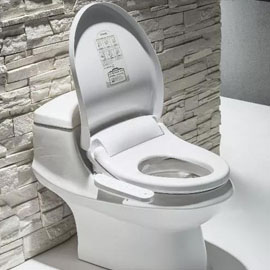
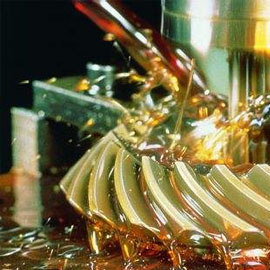
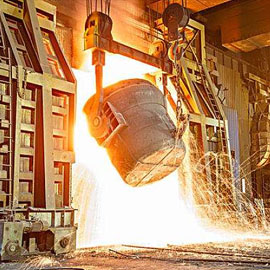
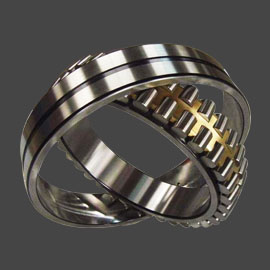
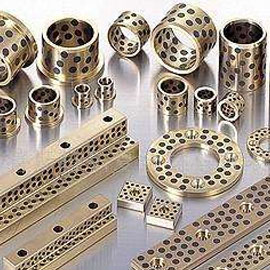
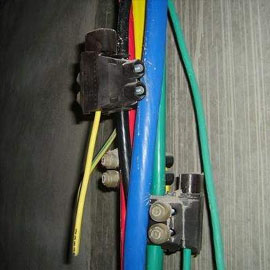
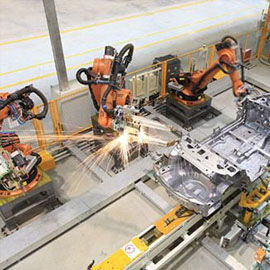









 86-13380181800
86-13380181800

 86-13380181800
86-13380181800